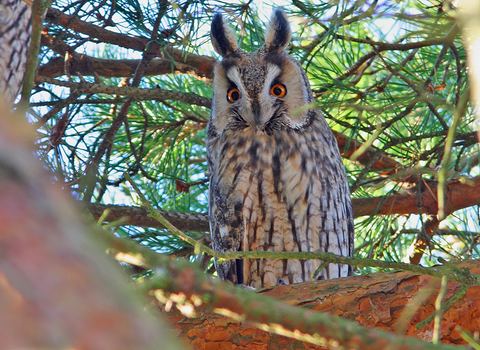
©Stefan Johansson
Long-eared owl
Unsurprisingly, the nocturnal long-eared owl sports large 'ear tufts' on its head, while the short-eared owl has much smaller ear tufts. A shy bird, it is best spotted around the coast when migrating, or in its communal winter roosts.
Scientific name
Asio otusWhen to see
January to DecemberSpecies information
Category
Statistics
Length: 35-37cmWingspan: 95cm
Weight: 290g
Average lifespan: 4 years
Classified in the UK as Green under the Birds of Conservation Concern 5: the Red List for Birds (2021).
